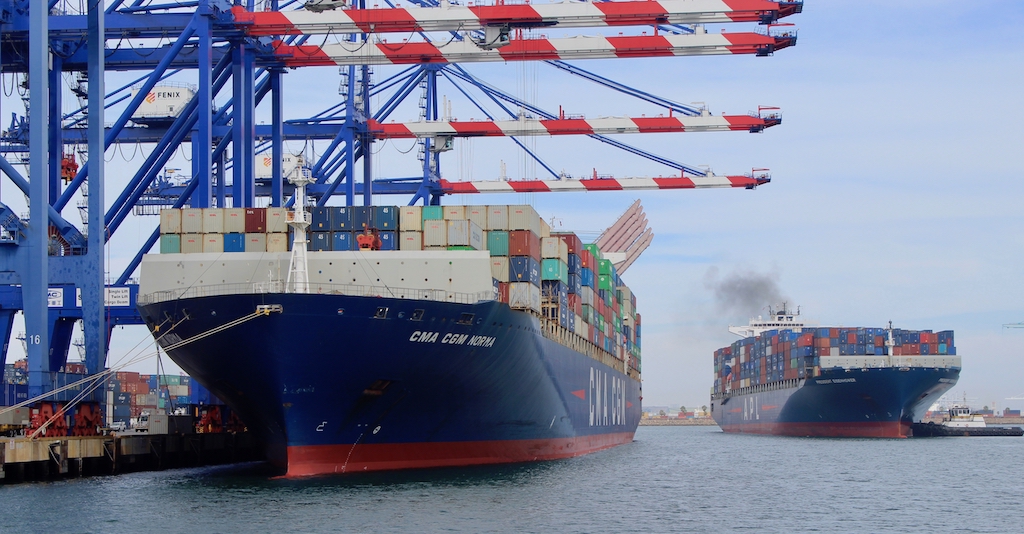But experts caution that there are many unknowns — and a whole lot of uncertainty — regarding the Jan. 1, 2020, implementation of the worldwide low-sulfur fuel mandate, dubbed IMO 2020.
Currently ocean carriers’ container vessels burn bunker oil that has a 3.5% sulfur content. Effective Jan. 1, they’ll need to use exhaust scrubbers or burn fuel with a sulfur content no higher than 0.5%, according to the International Maritime Organization.
Most are opting to run lower-sulfur fuel, and IMO 2020 is expected to raise ocean carriers’ fuel prices. It’s unclear by how much or for how long prices might remain elevated before refining capacity catches up to demand, says Mark Bononi, an independent energy analyst based in New York.
The low-sulfur marine fuel will compete for the same refinery capacity that’s currently used to produce diesel fuel used by trucks and locomotives. The result may be a spike in diesel prices.
“Just how large an impact, and for how long, remains to be seen,” Bononi says.
Higher diesel fuel prices tend to favor intermodal because rising fuel prices have a bigger impact on truckers’ costs. And that, experts say, could enable railroads to capture more domestic intermodal traffic as highway costs rise.
Railroads also could benefit from the higher marine fuel prices if they are significant enough.
Peter Wolff, director of market development at TTX Corp., said in a webcast last month that if marine fuel prices rise 15%, it could increase the container shipping costs from Asia to the West Coast by $200 and from Asia to the East Coast by $400 — per container.
That price swing may be enough to partially reverse the trend toward more containers landing at East Coast ports. Container volume is down nearly 2% at West Coast ports this year, while volume is up around 8% at East Coast ports.
Part of that share shift is due to the impact of tariffs on Chinese goods, which tend to land at West Coast ports. East Coast imports tend to be from origins in Southeast Asia, which remain unaffected by trade tensions.
A share shift back toward West Coast ports would favor intermodal. Cargo that lands on the West Coast has a 70% chance of moving inland via rail, while freight landing at East Coast ports has only a 20% chance of moving to its destination via rail due to shorter hauls to inland destinations, Wolff says.
The magnitude of the potential marine fuel price increase — and its impact on diesel fuel prices — is nebulous right now, Sarthak Verma, senior vice president for international services at J.B. Hunt Transport, said last week at the Intermodal Association of North America’s Intermodal Expo.
He does not see international container volume shifting back to the West Coast due to IMO 2020.
And Lars Jensen, CEO of SeaIntelligence Consulting, told the IANA Expo that fuel prices are likely to remain below the levels of five years ago despite any increase related to IMO 2020. That suggests, he says, that IMO 2020 will not affect where containers land in North America.
Todd Tranausky, a rail and intermodal analyst with FTR Transportation Intelligence, expects the fuel impact to be relatively short lived. “It’s going to be a three- to six-month phenomenon while the market adjusts,” he says.
And that means it won’t be around long enough to have a meaningful impact on intermodal share, he says.
Bononi says IMO 2020 is just another element in a long list of factors that can influence fuel prices, including global economic demand, crude oil prices, inventories, refinery utilization, and geopolitical issues.
“So any effort to precisely predict the impact of the new regulation on all involved is, to say the least, imprecise at best,” Bononi says.















The engines should run as well or better on low sulfur fuel. Engines do not like sulfur and maintenance costs might go down a little on the cleaner fuel.
David: they do not believe the engines will need to be changed. But one steamship company representative says no one has run these ships on the new fuel yet. Ian, this is a global rule, so Rupert would be affected just as much as any other port. It’s unclear what the cost impact would be at Rupert: It’s a day or two closer to Asia than other West Coast ports, but the ships that call on Rupert also call on other destinations along the West Coast.
Does the lower sulfur content require design changes to the ship’s engines?
How would this affect operations at Prince Rupert.
US refines the largest amount of ULSD globally because our diesel exhaust standards are the toughest. So technically refuel pricing in the US should remain static.
However, carriers refueling in Europe or in Asia might see price spikes because they don’t carry a large amount of ULSD refining capacity.
With diesel losing favor in Europe in preference of EV’s over the next 10-15 years, prices should rise, then gradually reduce as the demand switches over.